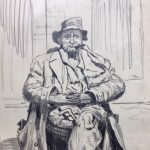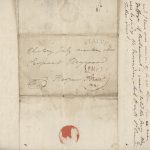
The Gestures of Hogarth
Among the works in the collection that inspired and influenced Brass Art’s commission ‘Gestured’ were some of the engravings and etchings of William Hogarth (1697-1764). The Library’s Hogarth collection consists...

Among the works in the collection that inspired and influenced Brass Art’s commission ‘Gestured’ were some of the engravings and etchings of William Hogarth (1697-1764). The Library’s Hogarth collection consists...

Announcing a new residency in partnership with Book Works For this open call we are inviting artists to propose a project that engages creatively and critically with Chetham’s Library, and...

Almost 200 years after the Peterloo Massacre, we can read contemporary press reports of this horrific event in Chetham’s Library’s Hay scrapbooks, which have just returned from a much needed...

Another guest post from our most excellent volunteer and great friend of the Library, Patti Collins. One of the delights of the library is that the most unlikely items often...

And indeed it wasn’t – not the French one, at least. It was engraved, however, a more genteel if slower way to record change, here presented as a Bastille day...

‘Biological Hermeneutics’ July 29 – August 26 2017 Chethams’s Library is looking for volunteers to help invigilate our summer art exhibition. ‘Biological Hermeneutics’, by transdisciplinary artist Sarah Craske, is based...

The pencil sketch of the philosopher C.E.M. Joad (1891-1953) is one of eight loose sketches contained in a folder, of which seven date from the Second World War. Only one...

Teresa May with her hands tied behind her facing a spike-gloved Angela Merkel in a boxing ring, the shadow cabinet as a panicking Dad’s Army led by ‘Captain Corbyn’ wearing a Lenin...

The first article in the June 1810 copy of the ladies’ magazine La Belle Assemblée is described as being one in a series of biographical sketches and is entitled ‘Memoirs...

The Heywood family have recently made a very generous gift of family documents to the library. One of items in this collection is an album containing 33 items of correspondence received by members...